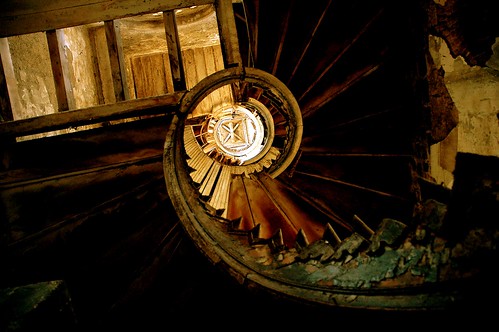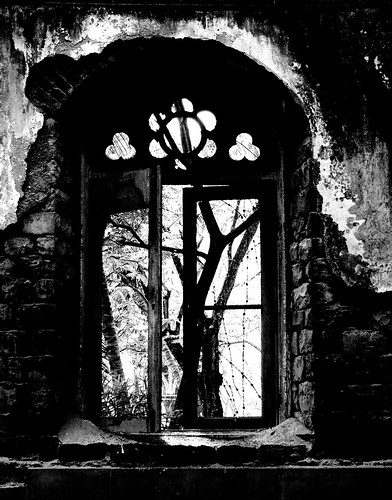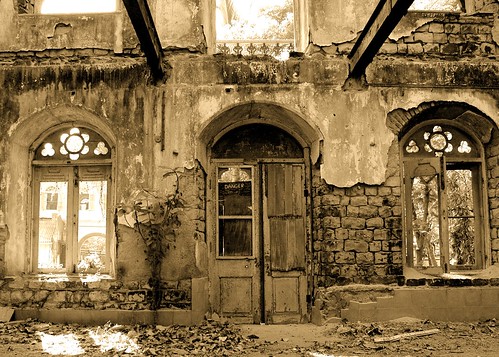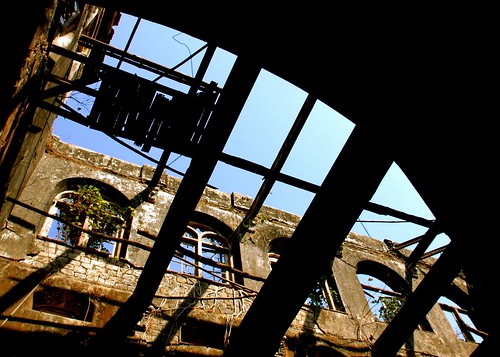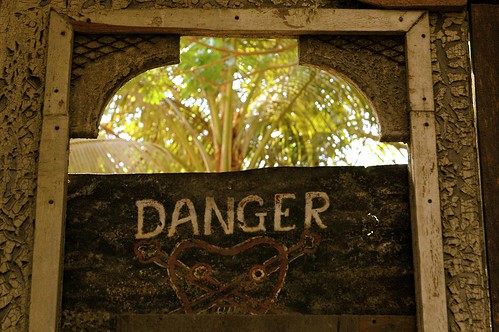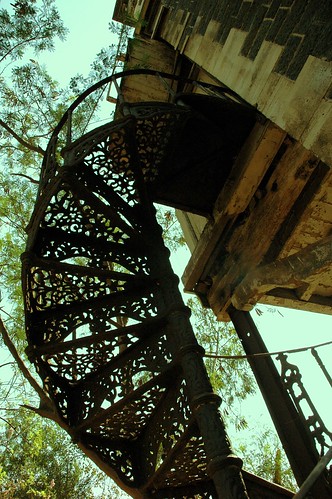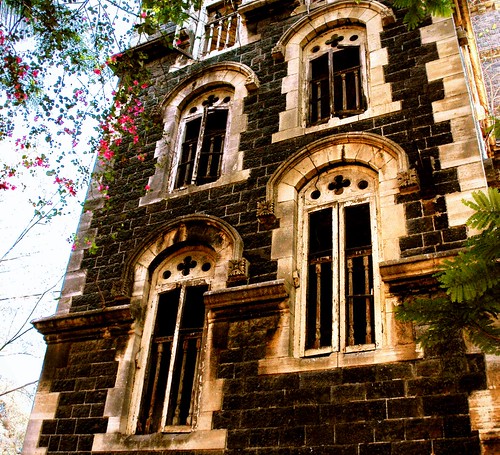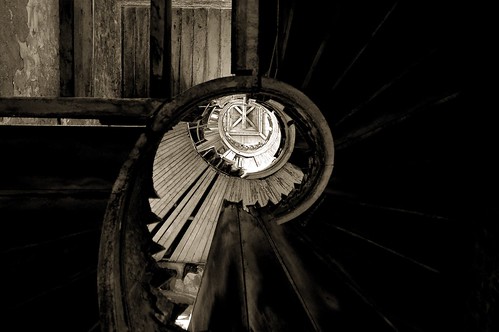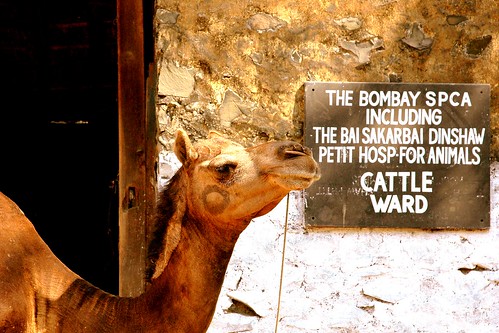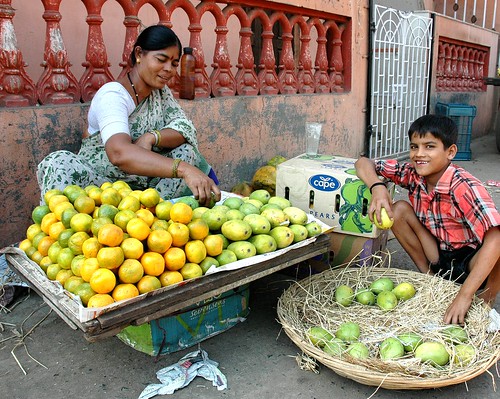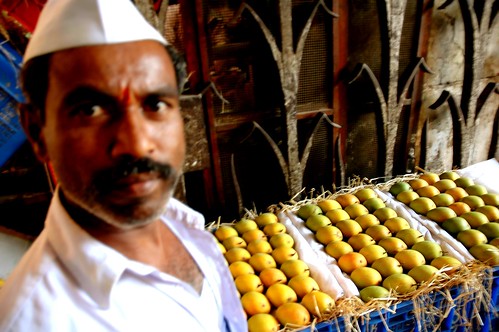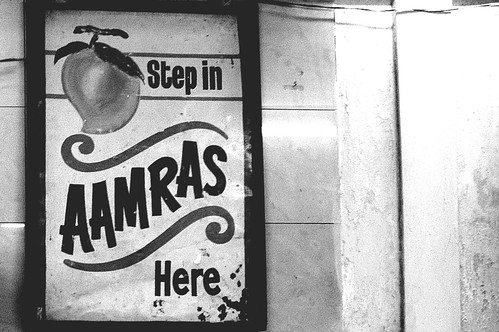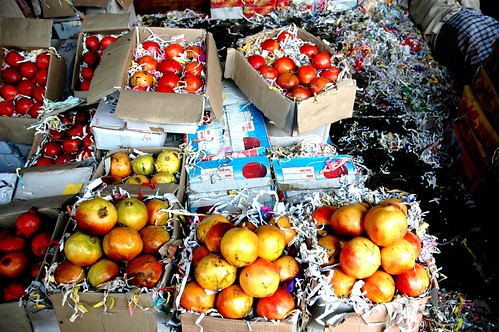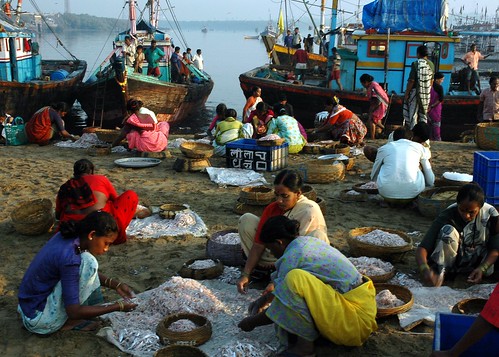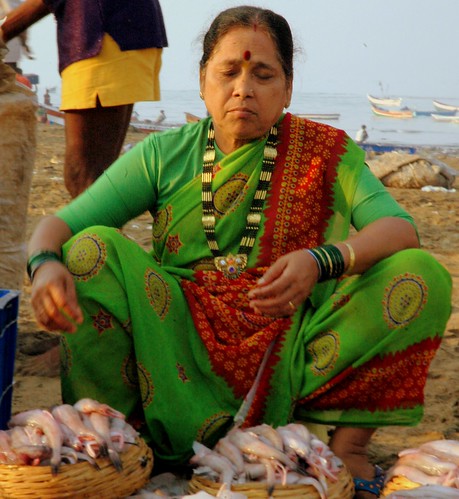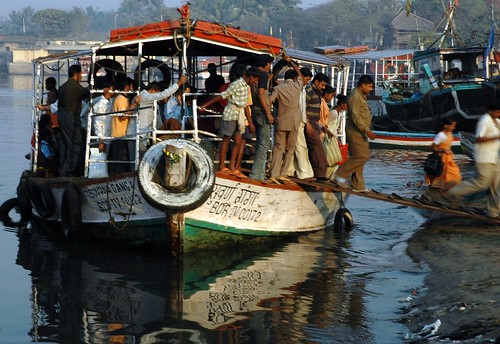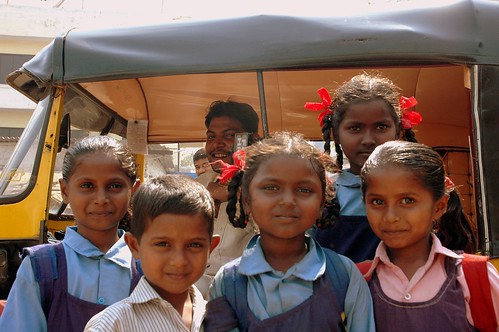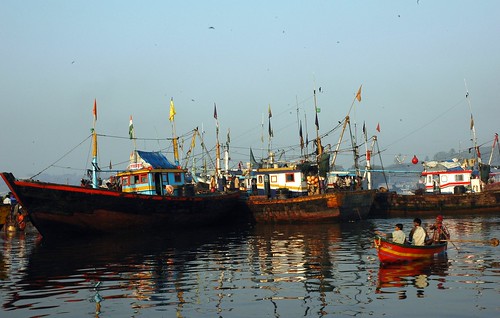
The Brahminy kite spirals downwards, descending faster into a vertical dive, till warmer pockets of air pull him up again, steadying his wings as he perches himself on a tree in an attempt to escape the torrid sun. Working men relaxed in the shady corners as the mid-afternoon sun brazed my skin brown. For many of us who do not have
to do hard work outside, and who have summer leisure time on ourhands, escaping the heat is not the goal. Luxuriating in it is. I am sure you have heard the Noel Coward refrain , "Mad dogs and English mengo out in the midday sun." I am not an Englishman but I might as well be a mad dog for I love the harsh sunlight. Therefore I had decided to forsake "steamy" Mumbai and brave a day in the dry Pune heat to
explore the old city once more.

As I have said before I tend to romanticize things from era gone by that I have never experienced and no one else may ever experience again. The central core that makes Old Pune is one such a place, a place of character lost in a myriad of peths, decaying wadas, huge banayan trees and temples. Old Pune to me is where time stops but the traffic does not, is where the people return your smiles and the
decaying wooden facades are not just gateways but time machines into an India of the past. Sadly heritage structures are the number one casualty in the growing concretization of the city. Many such remnants of the Pune's rich past are slowly disappearing.

[These are the gates of Nana Wada. Nana Wada, which was rebuilt during the British era with typical neo-Gothic arches. Only a part of the original wada remains to this day]

[Part of Nana Wada has converted in a muncipal school called the New Bharat Marathi School. The school was formed over a century ago by some rich Marathi cultural reformer]
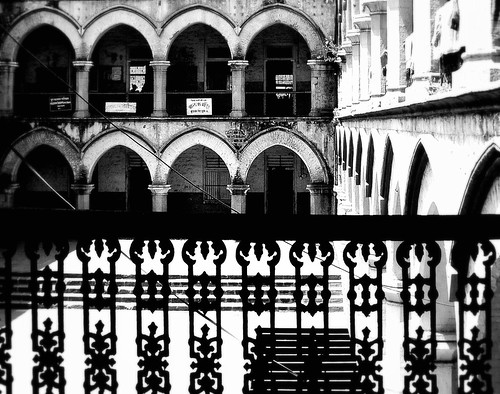
Like Bombay's Girgaon is divided in wadis [read Khotachiwadi], Pune is dived into Peths [burrows]. The old city is divided into 18 such Peths- interestingly some of which are named after the days of the week in Marathi: Shaniwar peth, Ravivar peth, Somwar peth, Budhwar Peth - just to name a few.
This excerpt you a sense of the ethos in Old Pune.
Peths were almost self sufficient units of administration, except for the watch and ward which was under the town kotwal. Each peth had a number of wadas (mansions) of the rich and some even had surrounding walls like Rasta wada. There were weekly as well as permanent markets, gardens, orchards and a number of temples. Wells supplied water needs and there were four drinking water systems. Highly efficient, these were a system of aqueducts bringing potable water from as far away as Katraj and
Kondhwa to the heart of the city for the public and water was collected in a system of howds or tanks. The river supplied the rest of what was needed.
Some street fronts were an unbroken façade of beautiful wadas with their ornate windows and carved brackets, balconies and beams. Some of these streets had the smaller courtyard type houses with the ground floor used as shops, offices or workshops, while the owners lived on the storeys above. The scale was low, often not n more than two storeys.
The government wadas (mainly used as offices, record stores) were large and there was atleast one in each peth. There were also stables for elephants and horses and the artillery factory (Shukrawar Peth). Lanes were narrow except in some newer peths like Rasta Peth.
There were no grand vistas or procession ways. The only grand public space was the front of the Shaniwar Wada and the surroundings of Parvati Hill with its man-made lake and garden at its foot, and the complex of temples on top.
[Source : Pune, Queen of the Deccan, by Jamala Diddee]
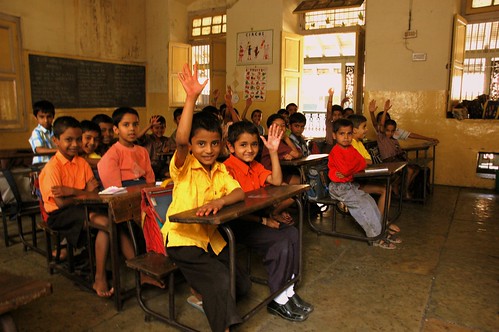
[Children at New India Marathi School. There were a real smart bunch they were. I asked them what they wanted to be when they grow up and I got the usual answers - doctors, engineers (specfically computers), scientist etc. ]
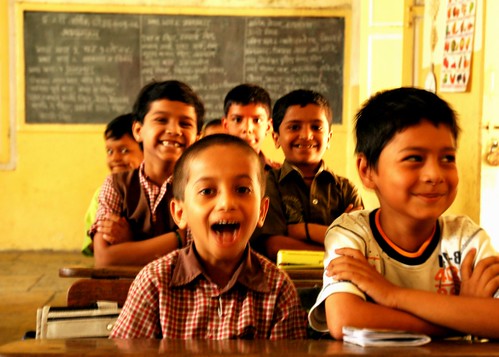
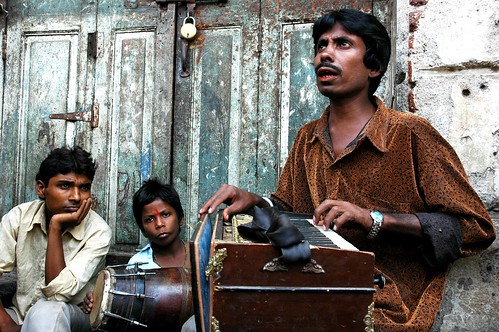
[Street musicians at Budhwar Peth.]
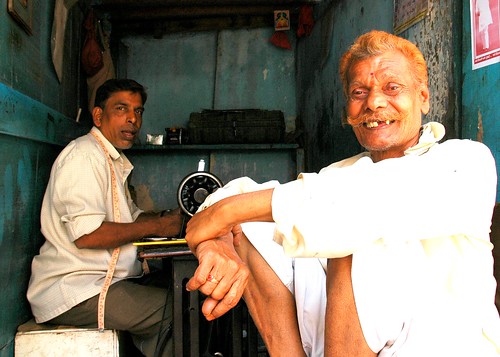
[A Tailor and his jovial guest.]
